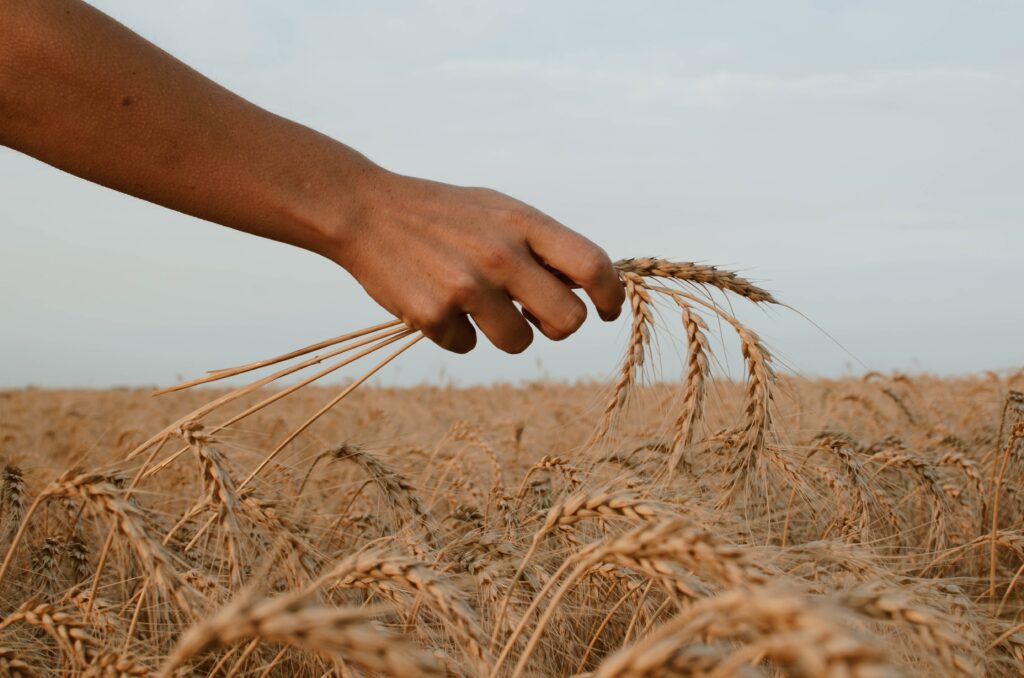My dad, a Southern protestant minister, preached a variation of the same sermon nearly every Sunday. As a child, I struggled to stay awake. As a cynical teenager, I’m embarrassed to admit, I often tuned out.
Now, at middle age, I’m much like my father (and I’m OK with that). But my sermon isn’t about salvation from fire and brimstone; my constant theme is salvation from hunger.
As Southerners, we always had plenty of (too much) food. Food was important to us. Family gatherings were fueled by Big Mama’s (grandmother’s) glazed ham, Aunt Gladys’ potato salad and divinity, or my mom’s fried chicken (better than the colonel’s any day)—with dozens of side dishes, mostly home-grown vegetables cooked just right, not to mention all the cakes and pies. We ate good!
A big part of the reason for that food-centric culture is hunger was only a generation or two away. My parents and extended family well remembered leaner times during the Great Depression and the Dust Bowl.
My dad had been a Depression baby, and he raised a garden that would feed not just his own family but several, ensuring that neither we nor anyone we knew would go hungry. I, the smart-alecky teenager who would prefer to get her summer tan by the pool, not hoeing corn, thought, “You can buy this stuff at the store, ya know.”
But I’m so thankful that dad instilled in me a sense of not taking food for granted. It made me think about where our food came from. It made me think of people outside our situation. If hunger was a clear and present danger for just one generation before mine, in the richest country in the world, what about people elsewhere? And could our own food security fade, even here, if we don’t work hard enough and make the right decisions?
Like dad, preventing hunger became a priority and preoccupation of mine. In fact, I feel it is my occupation. As a director of communications at the Biotechnology Innovation Organization (BIO), and in previous roles working for agriculture, my job always has felt like a divine calling. I’m passionate about feeding people and excited about advancing technology to reduce hunger.
That work is as vital as ever. Global hunger numbers climbed to 828 million in 2021, according to the World Health Organization (WHO), plunging an additional 46 million people into hunger compared to 2020. That’s obviously the wrong direction.

There are numerous factors: war, a pandemic, poverty, and, of course, weather. If dad were still living, as a farmer and gardener, he’d certainly take notice of the changes happening in our climate. He was one heck of a gardener (nobody could grow big, abundant tomatoes like he could), but even he would face crop losses with the intense storms and droughts we’re experiencing more and more frequently. I think he’d worry: are things going to get worse, and how are we going to feed a growing world?
Biotech is delivering solutions for hunger
Dad liked to peruse seed catalogs and try out the latest hybrids to boost his yields of peas and tomatoes. I think he’d be encouraged by how crop science is delivering solutions, through biotechnology, such as plants that produce bigger crops, resist pests, and withstand heat and drought.
Last year, the U.S. approved a new corn trait from Bayer that’s tolerant to a broad-spectrum herbicide, giving farmers a solution to weed resistance. Also last year, several countries approved a new drought-tolerant, transgenic variety of wheat, one of the most important crops to diets around the world. While the company that developed it, Bioceres, doesn’t yet plan to commercialize the trait in the U.S., the U.S. Food and Drug Administration (FDA) has concluded there is no question of its safety, and Bioceres says the technology increases wheat yields 20 percent, on average, in dry conditions. Several varieties of disease- and pest-resistant, or pesticide-tolerant, crops already are available, and more are on the way.
Agrifood innovation has been around since the invention of the plow, but technological developments in recent decades, such as biotech and other high-yielding crop varieties, have supercharged our ability to feed ourselves while using less resources. According to USDA, U.S. farm output grew 170 percent between 1948 and 2015—at an annual average rate of 1.48 percent.
However, there are warning signs. According to at least one study, global crop production, taking into account agricultural production in less-developed countries, has grown at a slower pace than in the U.S. alone, and yields for the three crops that make up more than half of the world’s diet—corn, rice, and wheat—are stagnating in some regions. To prevent a global food crisis as the population grows and climate impacts intensify, we must continue to innovate, including extending the benefits of biotechnology to the barnyard with healthier animals.
Like my dad, I can be a broken record on the topic that I’m passionate about, and what I care about is food security and nutrition. I’m preaching to the choir. We all know that technology, specifically biotechnology, has revolutionized agriculture and increased productivity, especially in the agricultural powerhouse that is the U.S. With continued innovation and government policy that allows for further development and commercialization of new traits, we’ll never go hungry. I’ll keep preaching it and working for it. Amen.




